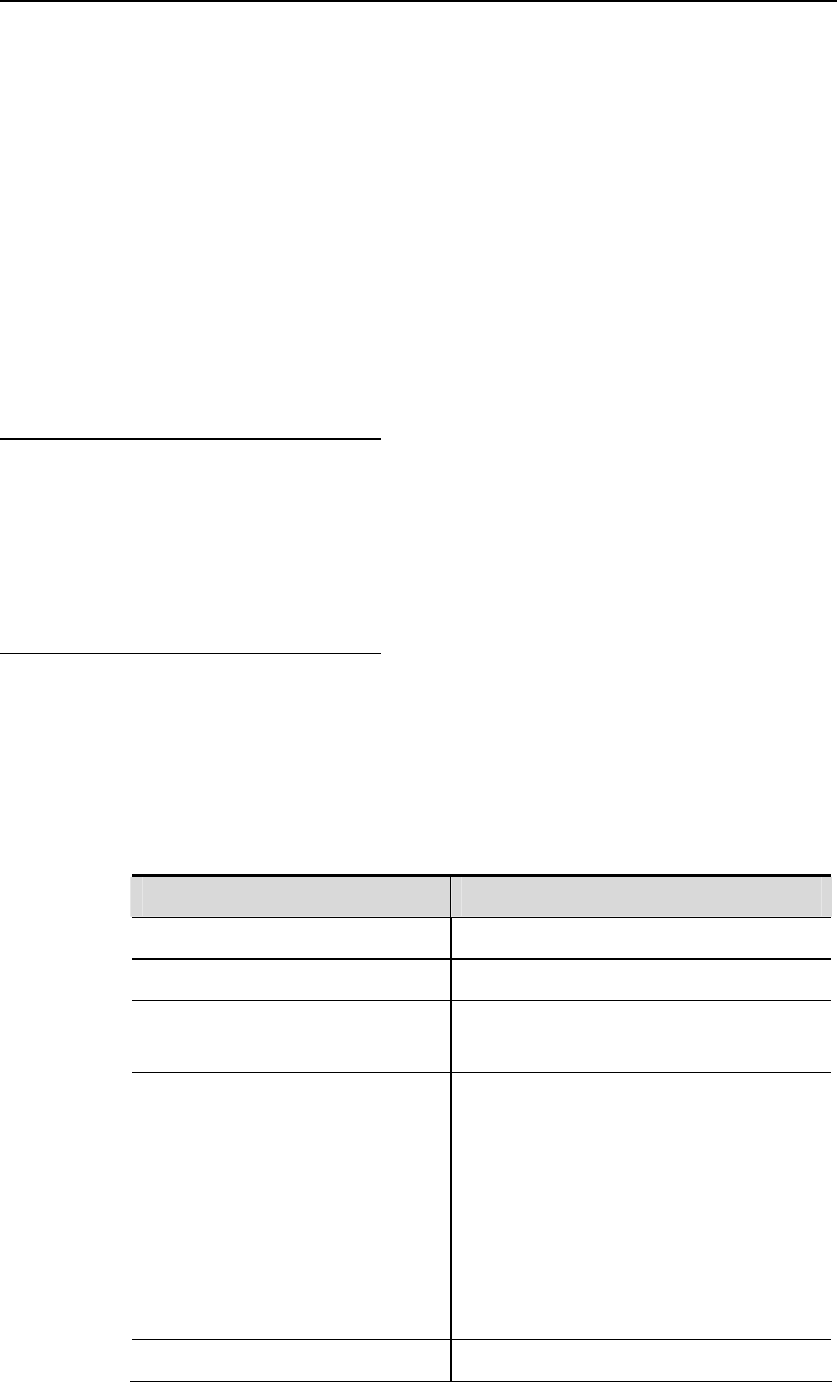
DES-7200 Configuration Guide Chapter 3 BFD Configuration
3-25
DES-7200(config-if)#no switchport
DES-7200(config-if)#ip address 192.168.1.1 255.255.255.0
DES-7200(config-if)#bfd interval 50 min_rx 50 multiplier 3
DES-7200(config)#interface FastEthernet 0/2
DES-7200(config-if)#no switchport
DES-7200(config-if)#ip address 192.168.201.17 255.255.255.0
DES-7200(config-if)#vrrp 1 priority 120
DES-7200(config-if)#vrrp 1 ip 192.168.201.1
DES-7200(config-if)#vrrp 1 track bfd FastEthernet 0/1 192.168.1.3 30
DES-7200(config-if)#end
3.3.12 Configuring the BFD for
VRRP+
Since VRRP+ relies on VRRP, after configuring BFD for VRRP, VRRP+ will
automatically associate with BFD.
3.3.13 Configuring BFD to Support
Changing the State of Layer
3 Interfaces
Generally, it will take a long time for link communication failure or link failure to
change the interface state. For various FRRs relying on interface state,
high-performance switchover cannot be achieved. Therefore, BFD is generally
associated with the layer-3 interface state to realize fast detection of interface
state. Execute the following configurations to associate BFD and layer 3
interface states.
Command Function
DES-7200>enable
Enter privileged mode
DES-7200# configure terminal
Enter global configuration mode
DES-7200(config)# interface type
number
Enter a specific layer-3 interface
DES-7200(config-if)# bfd bind
peer-ip ip-address [source-ip
ip-adress] process-pst
Configure the neighbor detected by BFD
Source-IP is used to specify the source IP of
BFD packets to prevent such packets from
being discarded due to the failure of uRPF
check while uRPF is enabled at the same
time.
Process-pst refers to the BFD state of the
interface generating BFD session.
DES-7200(config-if)#end
(Optional) Exit privilege mode


















